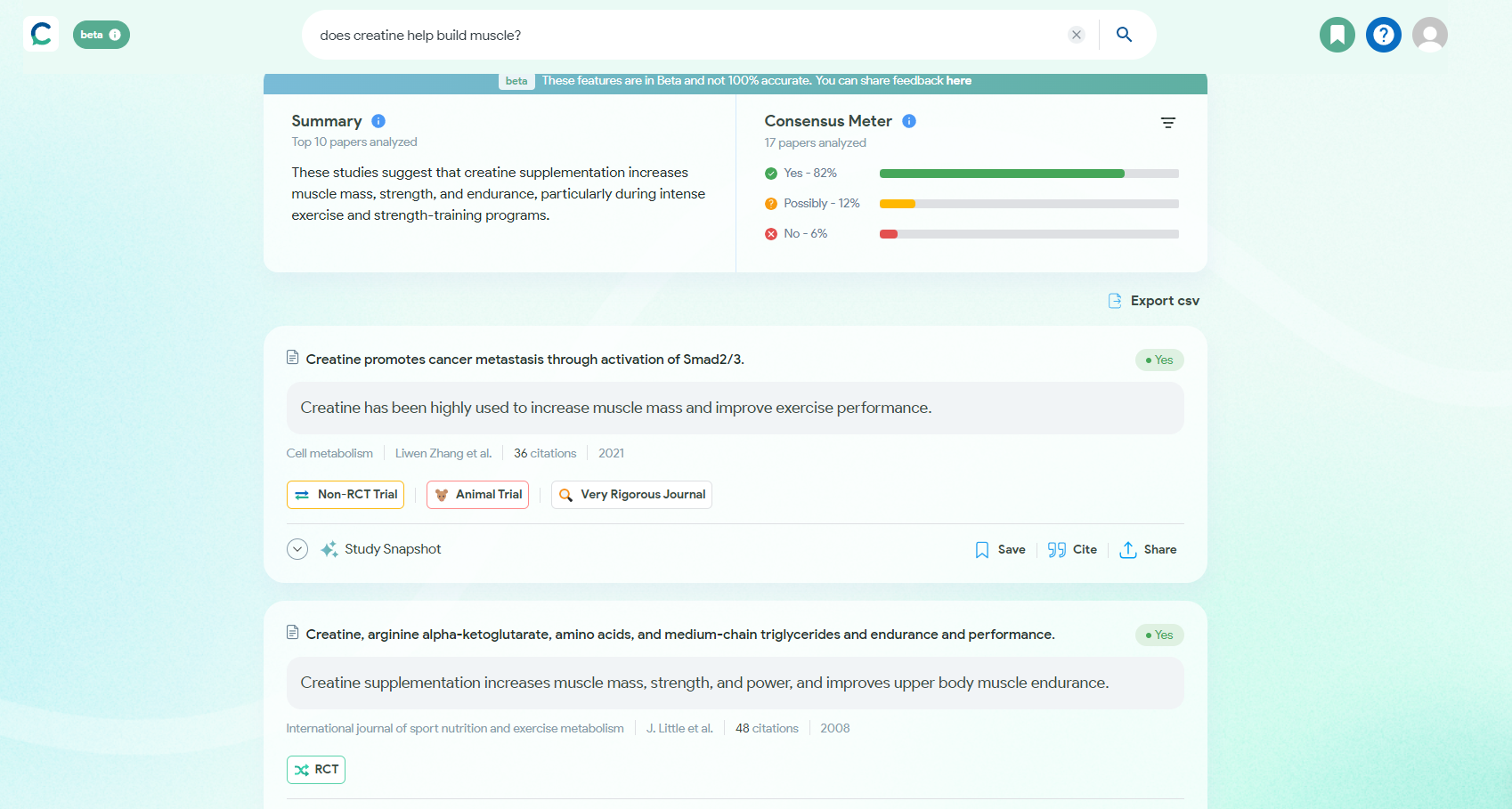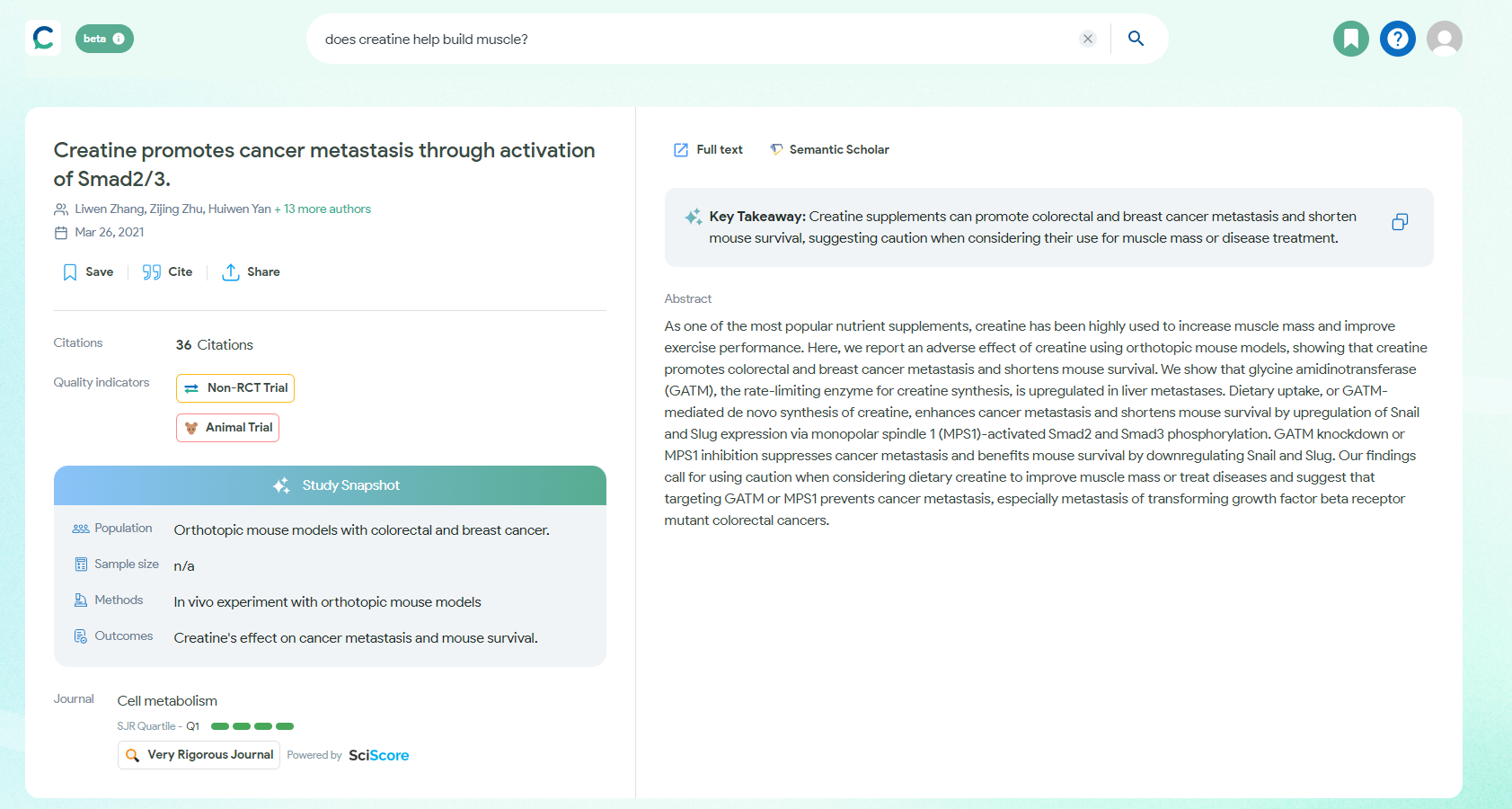The AI tool I chose to experiment with was Consensus. This AI tool helps users find papers related to the user question and gives a detailed summary of them. It lays out important elements like where it ranks in the hierarchy of evidence, methodology of the paper and how many times the paper was cited. It also provides a link to the actual paper if you wish to explore the paper further. Consensus can also analyze the papers and show a poll as to what the likely answer to your question will be. You can then see and read the different papers that show the different views.

This tool is fantastic because it drastically cuts the amount of time one has to read to find whether a paper is relevant to use in a scientific report. It enhances teaching in that students can be more engaged with the material to what they want to learn about rather than trying to read a lot of papers only to find no relevance to the material. The tool also easily demonstrates the idea that a given question doesn’t always have a clear-cut answer in science. There are different perspectives to take into account, which may affect our understanding of the subject.

Of course, this is not to say that Consensus should be heavily relied on. During this point in time, the developers acknowledge that Consensus is a generative AI and may provide incorrect results. They also confirm the AI is only 90% accurate with its results and may exclude vital context. While I would introduce this AI to the classroom to get them engaged with the material, I would want to teach them how to read a scientific article properly.
I am uncertain how I feel about integrating AI into the education system. On one hand, there are plenty of AI tools that can certainly help students with their learning. They are tools that teachers can use to fulfill the Saskatchewan Adaptive and Inclusion documents. One example is the speech to text AI tools. There are also tools that can assist students in how they tackle a given subject. If a student does not have a creative mind, Dall-E and Midjourney can help shape their thoughts into a visual picture which the student can then use to express themselves or use on a given assignment, On the other hand, there are AI tools that could help students find an easy way getting something done without necessarily having to learn it. Students could use ChatGPT to insert a prompt for an English assignment, then hand it in to the teacher without doing the work or understanding the learning behind the assignment.
In the end, I suspect AI will play a role quite similar to the introduction of the internet back in the early 2000s. It will become a medium that will be used both for good and bad. My hope is that it will become a tool students can use to aid in their learning, rather than become a distraction and detriment.
